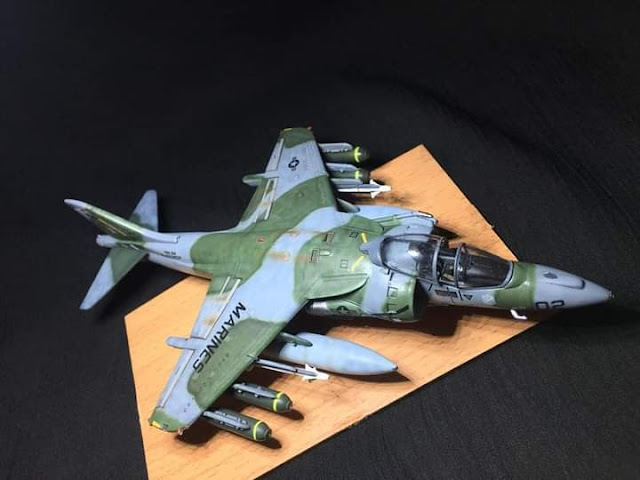Karachi Aeromodeller Group Makes Beautiful Plastic Model Aircraft
Karachi Aeromodellers is likely a group of individuals interested in building plastic model aircrafts. These types of models are typically replicas of real-life aircrafts made from plastic kits and assembled by hobbyists. The aim of building these models is to recreate the appearance of real aircrafts and to develop skills in model building, painting, and detailing.
A plastic model is a miniature representation of an object or structure made from plastic materials. It can be a representation of anything from a building, vehicle, aircraft, figure, or even a fictional character. Plastic models are typically built as a hobby, often by assembling individual pieces, painting and detailing the final product. They are popular among hobbyists, collectors, and model enthusiasts for their versatility, affordability, and ease of use.
Refers to a scale model of an aircraft made of plastic material. These models are typically created for hobbyists and collectors, and come in various scales ranging from 1:72 to 1:32. Plastic model aircraft can be built from kits, which come with all the necessary pieces and instructions for assembly, or from scratch using raw materials such as plastic sheets, rods, and parts from other kits. The finished models can be painted and finished to replicate the look of the real aircraft. Some plastic model aircraft even include detailed interiors, engines, and other intricate details.
Are miniature replicas of actual aircraft made of plastic. These models are typically assembled by hobbyists or enthusiasts and can range from basic snap-together kits to complex models that require extensive painting, detailing, and assembly. Plastic model aircraft can be a fun hobby that combines creativity and technical skill, allowing hobbyists to build and display their favorite aircraft in miniature form. These models can also be used for educational purposes, as they can provide a visual representation of the various parts and systems that make up an aircraft.
Finally complete the airfix harrier 1/72 scale ..
The project that eventually led to the AV-8B's creation started in the early 1970s as a cooperative effort between the United States and United Kingdom, aimed at addressing the operational inadequacies of the first-generation Hawker Siddeley Harrier. Early efforts centered on a larger, more powerful Pegasus engine to dramatically improve the capabilities of the Harrier. Because of budgetary constraints, the UK abandoned the project in 1975.
Following the UK's withdrawal, McDonnell Douglas extensively redesigned the earlier AV-8A Harrier to create the AV-8B. While retaining the general layout of its predecessor, the aircraft incorporates a new, larger composite wing with an additional hardpoint on each side, an elevated cockpit, a redesigned fuselage and other structural and aerodynamic refinements. The aircraft is powered by an upgraded version of the Pegasus. The AV-8B made its maiden flight in November 1981 and entered service with the USMC in January 1985.
Later upgrades added a night-attack capability and radar, resulting in the AV-8B(NA) and AV-8B Harrier II Plus versions, respectively. An enlarged version named Harrier III was also studied but not pursued. The UK, through British Aerospace, re-joined the improved Harrier project as a partner in 1981, giving it a significant work-share in the project. Following corporate mergers in the 1990s, Boeing and BAE Systems have jointly supported the program. Approximately 340 aircraft were produced in a 22-year production program that ended in 2003.
Typically operated from small aircraft carriers, large amphibious assault ships and simple forward operating bases, AV-8Bs have participated in numerous military and humanitarian operations, proving themselves versatile assets. U.S. Army General Norman Schwarzkopf named the USMC Harrier II as one of several important weapons in the Gulf War.
It has also served in Operation Enduring Freedom in Afghanistan since 2001, the Iraq War since 2003, and was used in Operation Odyssey Dawn in Libya in 2011. Italian and Spanish Harrier IIs have taken part in overseas conflicts in conjunction with NATO coalitions. During its service history, the AV-8B has had a high accident rate, related to the percentage of time spent in critical take-off and landing phases. USMC and Italian Navy AV-8Bs are being replaced by the Lockheed Martin F-35B Lightning II, with the former expected to operate its Harriers until 2025.








0 Comments
Post a Comment